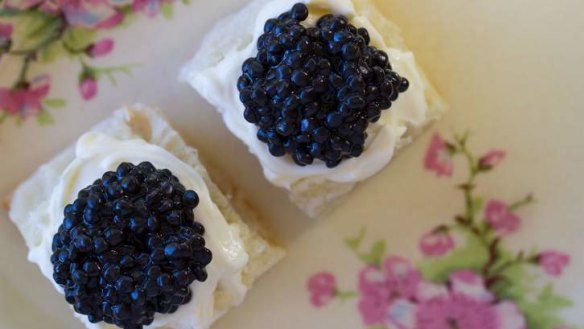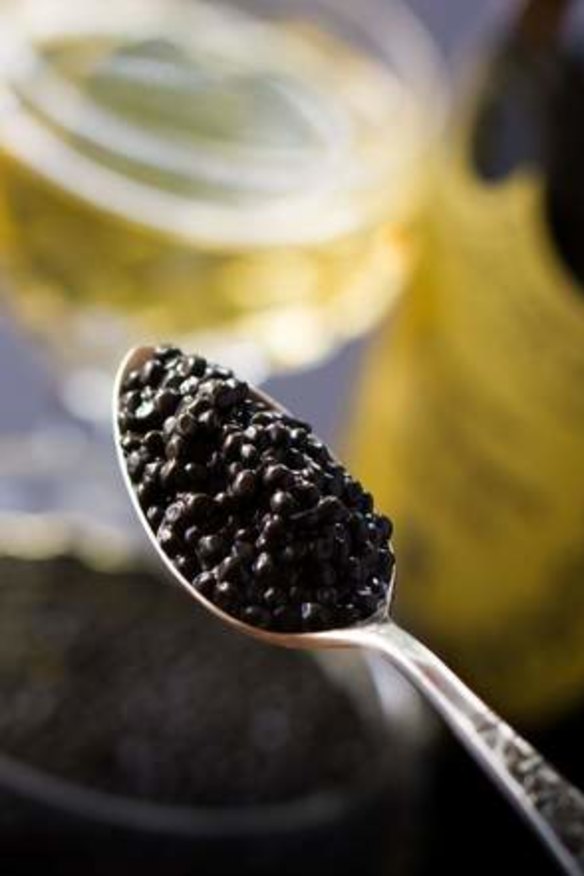You have just one day

Wake up! You only have a day to pull this thing together. Do I have to remind you that tomorrow is Valentine's Day? There's not much time, so listen up.
Calling it Valentine's Day makes it easier to market to people of all religions and persuasions, but the real name is St Valentine's Day or more specifically the feast of St Valentine. So this puts the job of helping you, even at this late date, squarely in my capable hands.
And yes, I have forgotten about it on more occasions than I can remember, but not this year, not here! I'm so far ahead of the game that on the day she will once again place me back on that crumbling pedestal.

There are two ways of going about this: If you are time-poor and cash-rich, go wild on exotic and expensive stuff that doesn't need much prep, say a bottle of good fizz and a jar of caviar. Or, if you are the reverse, make her something special that has taken hours to prepare and may or may not involve hunting. Remembering that chicks dig blokes that are both sensitive and able to bring down a 10-point deer at 50 paces.
A few weeks ago, see that's how far ahead of you I am, I contacted Lester Jesberg, a local wine guru who knows everything about luxury items. You're making a gin and tonic with, say, Hendrick's gin and not sure what to put in it. A quick direct message to Jesberg will come back "a sliver of cucumber skin and go easy on the tonic".
So when I ask ''where do you get caviar from?'' his answer is caviarastrakhan.com, a Russian site where you can buy a trio of black Russian Osetra, Beluga and Royal caviar jars for $229.
Sure, this isn't sustainable. The fish in question are not plentiful, and seeing as they're not chickens, they don't kindly leave their eggs on a pile of straw each morning. They have to be killed to extract the eggs and then you have to cart them clear across the world. All that aside, it's caviar, everyone should experience it at least once and there is no better day than this.
However, you're too late for this, so you'll have to make do with Avruga. It's not the same, much like I'm not the same as Hugh Jackman. We are both Aussie blokes, but I can't sing or dance and I'm pretty sure my partner would ditch me in a heartbeat if Hugh came a-calling. Avruga is a caviar substitute made from herring, which is plentiful, much like Australian men who aren't Hugh are plentiful, so you can use it the same way and bask under the glow that it is still pretty good and it is sustainable.
All you need now is a bottle of fizz. Here, Salon 96 would be my suggestion, but Dom Perignon works a
treat. Just serve the caviar straight from the jar, maybe with a little toast and creme fraiche.
If you have plenty of time and haven't got a couple of grand to throw at this, making a fairly extravagant dish could also work in your favour. Zapping a store-bought lasagne definitely won't; I've tested that and it doesn't go down well at all. If you've got to the point of considering a store-bought lasagne, go with the "every day with you is Valentine's Day" option, but grabbing a duck, spending the best part of the day preparing it and decanting a bottle of pinot might just pull it off.
You'll need to start tonight by curing the duck (rubbing with the salt mix) and making the stock. In the morning, you need to get the duck legs into a pot or the oven to cook for most of the day. If you can get home at lunchtime, you can shred the meat and get it into the fridge to chill then; otherwise you'll need to get home on the night with a couple of hours to spare before dinner. So, set the mood, low lighting, the kids securely bound and muffled upstairs, have a little incense burning to just take the edge off the duck cooking behind you, take her to the candlelit dining room, the sorrowful vocals of Johnny Cash in the air, and if you really want to go for hell or high water, give her that foot massage you learnt after last year's debacle. A surprise foot reflexology session is a dead-set winner. Like, not even Hugh could come up with that.
Bryan Martin is a winemaker at Ravensworth and Clonakilla, bryanmartin.com.au
Duck two ways
1 duck
2 tbsp orange liqueur (such as Grand Marnier or Cointreau)
Salt cure
60g salt flakes
20g sugar
1 tsp black peppercorns, crushed
1 tbsp thyme leaves
1 star anise, crushed
6 juniperberries, crushed
Mix the cure ingredients. Separate the duck leg and thigh, and the breast from the carcass. Sprinkle the breasts with a little of the cure on both sides, lie skin side up and brush with orange liqueur. Rub the legs with the cure and shake off any excess. Leave the breasts and legs uncovered in the fridge overnight.
Potted duck
duck legs, cured as above
500g duck fat
To cook the duck legs, set the oven at 80C. Brush the salt cure off the legs and put them in a pot that can hold them covered in duck fat. Heat the fat to 80C, or just below a simmer (you don't want any movement in the fat), pour over the legs and cook for eight hours. If you're really stretched, you can put it in the oven at 130C for three or four hours instead.
Remove the legs and drain slightly. While they are still warm, shred them with two sturdy forks. Pack the meat in a nice-looking serving pot or in ramekins. Pour enough duck fat over the top to seal and chill (for a few hours if you have time).
This becomes your first course, potted duck. Serve with thick toast and pickled cornichons.
Duck breasts with pear and leeks
duck breasts and carcass
4 tbsp clarified butter
1 onion, chopped
2 stalks celery, chopped
2 carrots, chopped
2 cloves garlic, crushed
50ml Madeira, or use muscat
1 bunch thyme
juice of 1 orange
2-3 eschalots (golden shallots), finely diced
1 ripe pear, peeled
2 baby leeks, halved lengthways
watercress, to serve
Start the stock the night before. Chop up the duck carcass and bake the bones in a hot oven until nicely brown, turning every now and then. Fry the onion, celery and carrot in a tablespoon or two butter until cooked through. Add the cooked bones and the garlic. Deglaze with Madeira, reduce a little, then add enough water to cover. Cook on a low heat, or in the oven, well sealed, overnight. In the morning, strain and chill.
When you're preparing dinner on Thursday night, remove the fat from the stock, pour it into a pot and reduce down to a jus, about 80 millilitres. Add a few sprigs of thyme and some orange zest, leave to infuse for 20 minutes while you're cooking the breasts, then strain.
To cook the duck breasts, brush off any cure and place skin side down in a cold heavy-based pan. Bring the heat to a lowish simmer and cook for 10 minutes. Pour off any fat. Once the fat is gone, add about two tablespoons of butter and baste for another 10 minutes. Turn over and cook on the other side for a couple of minutes. Wrap in foil and keep warm for 10 minutes while you finish the dish.
Saute the eschalots in the pan until soft. Add the orange juice and reduce a little. Add the duck jus and swish to incorporate. Taste for salt and pepper.
Chargrill or panfry the quartered pear and leeks until slightly charred. Then brush with a little butter. Slice the breasts and serve with the leek and pear and the sauce drizzled over. Serve with watercress.
The best recipes from Australia's leading chefs straight to your inbox.
Sign up